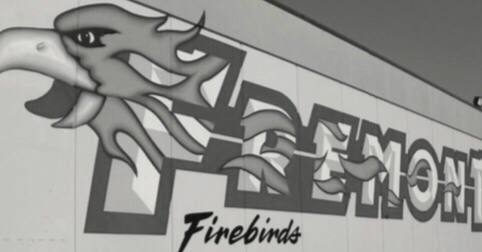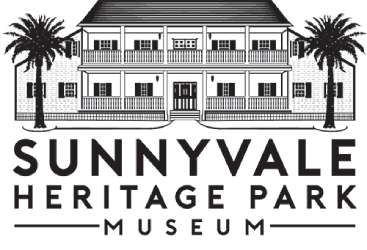I have lived “down the street” from Sunnyvale’s Fremont High School for nearly fifty years. During my decades of comings-and-goings past the school, I’ve been attracted by its lovely Spanish architecture, while feeling a mysterious connection with the building. Only recently did I learn why Fremont High School, with its red-tiled roof, Spanish-style arches, and blue urns near the porticos so appeals to me. William Weeks, the architect for Fremont High School, also designed my alma mater, Santa Barbara High School. The Spanish mission–style architecture of the two schools is similar; each reminds me of the other.
William Weeks: Architect
Who was William Weeks, the architect, and how did he come to design both schools, located three hundred miles apart, almost one hundred years ago?
William Henry Weeks (1864-1936) designed hundreds of schools as well as banks, libraries, homes, and hotels (including San José’s iconic Hotel De Anza) in California, Oregon, and Nevada during the first third of the twentieth century. His architectural styles encompassed Gothic, Moorish, Victorian, Mission, and Colonial. Many of his buildings, including Fremont High School, have been listed as state historical landmarks.
Born in Canada, William received much of his design training from his father, a talented designer and builder in his own right, and from the Brinker Institute of Denver. William’s first architectural office was located in Watsonville, California, where he was responsible for many of the town’s design projects. His firm later branched out to the greater Bay Area, including Palo Alto and San Francisco. After the 1906 San Francisco earthquake, Weeks became a leader in earthquake-resistant construction.
Between 1910 and 1920 the high school population of California doubled (new laws made high school education compulsory, thus creating the need for many new schools). Weeks, “in the right place at the right time” for his career, was in great demand for designing reinforced concrete school structures. The local high schools designed by Weeks include the old Mountain View High School, Los Gatos High School, Campbell High, Burlingame High, and Sunnyvale’s Fremont High School. He also designed Santa Cruz High School and numerous homes in Santa Cruz County.
In the mid-1920s, Harold Weeks, William’s son, joined his father’s business. By 1928, Weeks and Weeks was one of California’s largest and most notable architectural firms.
Fremont High School
Sunnyvale’s first high school began classes in 1923, in rooms borrowed from the Sunnyvale Elementary School building in downtown Sunnyvale. A short time later the school board purchased a site in the middle of orchard lands at the intersection of Sunnyvale Saratoga Road and Fremont Avenue and built a temporary structure to house the students. After two school bond elections for a permanent school building failed, a third bond finally passed. The school board commissioned architect William Weeks to design the school, and construction began in 1925.
Named after explorer and politician John C. Frémont, the new school opened its doors in 1927. A library and swimming pool were added in 1935. Expanded classroom wings, a science building, an updated music building, and football bleachers were among the many additions to the school throughout the years. In the continuing quest to meet the needs of a population growing in number and diversity, later additions included the upgrading of the sports fields, track, and swimming pool, and the installation of solar panels. A 2019 expansion, a large building housing guidance and student services and additional classrooms, faces Fremont Avenue. The design of the new addition, which closely matches the original Spanish architecture of the school, showcases the importance of historic landmark designations.
Fremont High Through the Years
World War II brought changes to the FHS campus. The building housing the school’s wood shop and auto shop was used to train pilots for the military. About half of the class of 1942 joined the armed services before graduation, with even greater numbers as the war continued. Each enlistee was represented by an American flag at the school’s graduation ceremonies. 
After World War II, the school’s industrial arts teacher purchased a surplus war airplane for $200, a B-25 two-engine bomber which flew in some of the earliest raids on Tokyo. The plane was flown to Moffett Field, disassembled, transported to Fremont High School, then reassembled. The plane proved to be a great teaching tool for auto tech and aeronautics students.

Above, a tribute to the Indian, Fremont’s first mascot, proudly displayed on the gymnasium’s exterior wall. Below, the Firebird became the school mascot in 1996.
Much of Fremont’s main building was destroyed by fire in 1969; the suspected cause was exposed wires from the antiquated electrical system. Due to the reduced number of classrooms available that year, the entire freshman class of 1969-1970 spent their freshman year at Monte Vista High School.
Fremont High School’s original mascot was the Indian, a theme well-represented throughout the school: the Wigwam was the school’s gathering place, the school dance team was known as the Featherettes, and “The Chief” was the name selected for the school newspaper.
Toward the end of the 20th century, a nationwide movement questioned the use of Native American names for mascots, claiming the word “Indian” was demeaning or even racist. Following the lead of Stanford University whose mascot was also an Indian, the FHS community debated a mascot change. In 1996 the Indian was replaced by the Fremont Firebirds. The new logo, currently painted on the side of the gym, is visible to all who drive past the school.
Each spring, Fremont High School’s lovely architecture is enhanced by an array of colorful tulips which dazzle passersby. The bloom of roses follows, along with petunias planted in the school colors of red and white that bloom in time for graduation. Bob Stahl, a 1963 graduate of FHS and the facilities manager from 1981-2005, designed and planted the colorful Fremont High spring garden.
Today, when the emphasis on new public buildings is more functional than beautiful, Fremont High School stands apart. William Weeks’ design continues to bring pride and pleasure to new generations of Fremont High School students and to the citizens of the Sunnyvale community as well.
Resources Used:
- Farrell, Harry. “Architect Leaves Landmark Legacy.” San Jose Mercury News. 1/8/1986.
- “William Henry Weeks, Architect.” Sunnyvale Collage II, Volume 2: pg. 389-391.
- “W.H.Weeks.” Wikipedia. 1/5/22.
- Rudy, Robert. “School may get official landmark status.” Palo Alto Times Tribune. Date Unknown.
- Marcotte, Henrietta. “Roots.” Cupertino Scene. Date Unknown. Pg. 9.
- “History and School Culture.” Fremont High School. 1/5/22. Fhs.fusd.org
By Linda Kubitz



